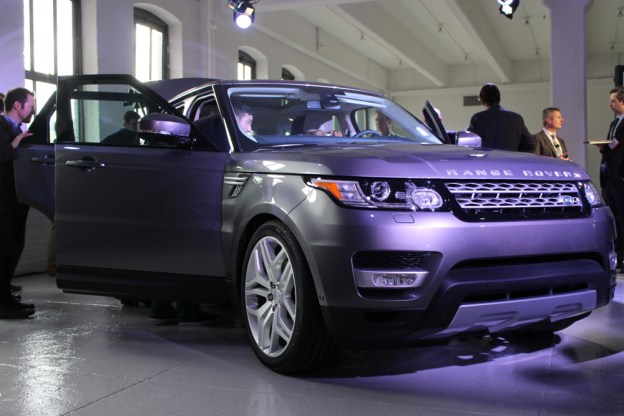
Check out our full written review of the 2014 Land Rover Range Rover Sport.
At a private event held the day before the 2013 New York Auto Show, Land Rover removed the velvety curtain off its all-new 2014 Range Rover Sport.
The iconic SUV has been completely revamped for the 2014 model year, with Land Rover talking up a number of enhancements including an improved power train, body and interior design, a drastic weight reduction (800 lbs worth!) and a host of new customer-oriented onboard tech.

The 2014 Sport has been imbued with a number of driver assistance technologies including enhanced park assist, blind spot monitoring, and active lane departure warnings.
A new traffic sign recognition system will also makes its way into the new Range Rover Sport, which utilizes a forward facing camera and front-mounted sensors to inform the driver of the current speed limit, road closure signs, and passing regulations, all through a high-res LCD display nestled between the instrument cluster.
Land Rover will also introduce an enhanced version of its adaptive cruise control system in the 2014 Range Rover Sport. Drivers will be able to set the desired speed and following distance. The Range Rover Sport will even come to a complete stop during traffic, with the driver needing only to tap the accelerator to resume cruise functions.

Finally, a new reverse traffic detection system called Flank Guard will up the luxury SUVs’ distance sensor count from four to six. These sensors will be able to detect potential side impacts during tight maneuvering, such as in parking garages, near pillars, and other physical obstacles.
Flank Guard will warn the driver via an audible beep and works in conjunction with the vehicle’s central cluster display to indicate proximity of objects and hazards.
Drivers will have a choice between 340 horsepower supercharged V6 or a 510hp supercharged V8.

Land Rover says the V6 will scoot from 0-60 mph in 6.9 seconds and pumps out 375 horsepower, while the V8 will make the same dash in less than five seconds.
Base price for 2014 Range Rover Sport SE will start at $63,495 with that figure rising to $79,995 for the supercharged V8 version.


